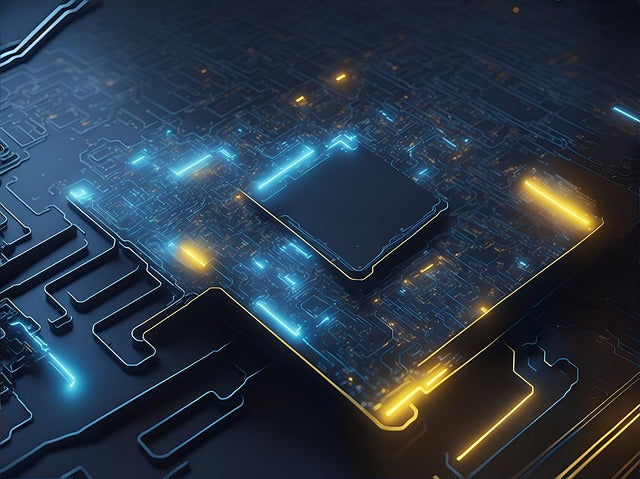The Silicon Titans: Nvidia, AMD, Intel, and Arm Shaping Our Technological Future

In the ever-evolving landscape of technology, a select few companies stand as titans, their innovations driving progress in artificial intelligence, cloud computing, and even how we drive. Nvidia, AMD, Intel, and Arm – these names may not be familiar to the average consumer, yet their influence permeates nearly every aspect of our digital lives.
Nvidia: The AI Powerhouse
Nvidia, once synonymous with high-performance graphics cards for gamers, has emerged as the undisputed leader in the field of AI. Its GPUs, originally designed to render stunning visuals, possess a unique architecture that excels at the parallel processing required for training and running complex neural networks. This has made Nvidia's GPUs the go-to choice for researchers and developers pushing the boundaries of AI, from powering the sophisticated language models behind OpenAI's GPT-3 to driving breakthroughs in medical imaging and drug discovery.
Arm: The Power-Efficient Architect
While Nvidia dominates the high-performance computing space, Arm excels in efficiency. Known for its energy-efficient CPU designs, Arm's architecture has become ubiquitous in the mobile world. Smartphones, tablets, and countless IoT devices rely on Arm-based processors for their power-sipping performance. This focus on efficiency makes Arm crucial for applications where battery life is paramount, from wearables to self-driving cars.
AMD: The Versatile Competitor
AMD has long been a formidable competitor to Intel in the CPU market, and its recent resurgence has been nothing short of spectacular. AMD now offers high-performance CPUs that rival Intel in both performance and power efficiency, making them a popular choice for gamers, content creators, and data centers. AMD also produces powerful GPUs that compete directly with Nvidia, offering a compelling alternative for gamers and professionals alike.
Intel: The Legacy Leader
Intel, the veteran of the semiconductor industry, has long dominated the PC market with its x86 architecture. While facing stiff competition from AMD in recent years, Intel continues to innovate, developing advanced CPUs for data centers and investing heavily in AI technologies, including specialized AI accelerators.
Comparative Table
| Company | Primary Products | Key Features | Major Applications |
|---|---|---|---|
| Nvidia | GPUs | High performance, AI optimized | Data centers, autonomous vehicles, gaming |
| Arm | CPU designs | Low power, high performance, mobile-focused | Smartphones, IoT devices, embedded systems |
| AMD | CPUs, GPUs | High-performance CPUs, gaming GPUs | Data centers, gaming PCs |
| Intel | CPUs | x86 architecture, general-purpose | PCs, servers, data centers |
The Intersection of Hardware and Software
These companies are not just chip manufacturers; they are the foundation upon which modern technology is built.
- AI: Nvidia's GPUs are the engines powering the AI revolution, enabling breakthroughs in machine learning, deep learning, and artificial intelligence. Arm processors are increasingly found in AI-powered edge devices, bringing intelligence closer to the source of data.
- Cloud Computing: Cloud service providers like Amazon Web Services (AWS), Google Cloud, and Microsoft Azure rely heavily on powerful hardware from these companies to deliver their services. Nvidia GPUs are essential for providing AI-as-a-service, while Intel and AMD CPUs power the core infrastructure of these vast data centers.
-
Autonomous Vehicles: Self-driving cars require immense computational power to process sensor data in real-time and make critical decisions. Nvidia's GPUs are widely used in autonomous vehicle systems, while Arm-based processors play a crucial role in managing various vehicle functions.
The Future of Computing
The future of computing will be shaped by the ongoing innovations of these companies. We can expect to see continued advancements in AI, with even more powerful and efficient processors driving breakthroughs in fields like medicine, finance, and entertainment. The rise of edge computing and the increasing demand for low-power devices will further solidify Arm's position. And the competition between these companies will drive continuous improvement, benefiting consumers and businesses alike.
This is just a glimpse into the complex and dynamic world of semiconductor technology. As these companies continue to push the boundaries of innovation, we can expect to witness even more remarkable advancements in the years to come.
Disclaimer: This information is for general knowledge and informational purposes only.


